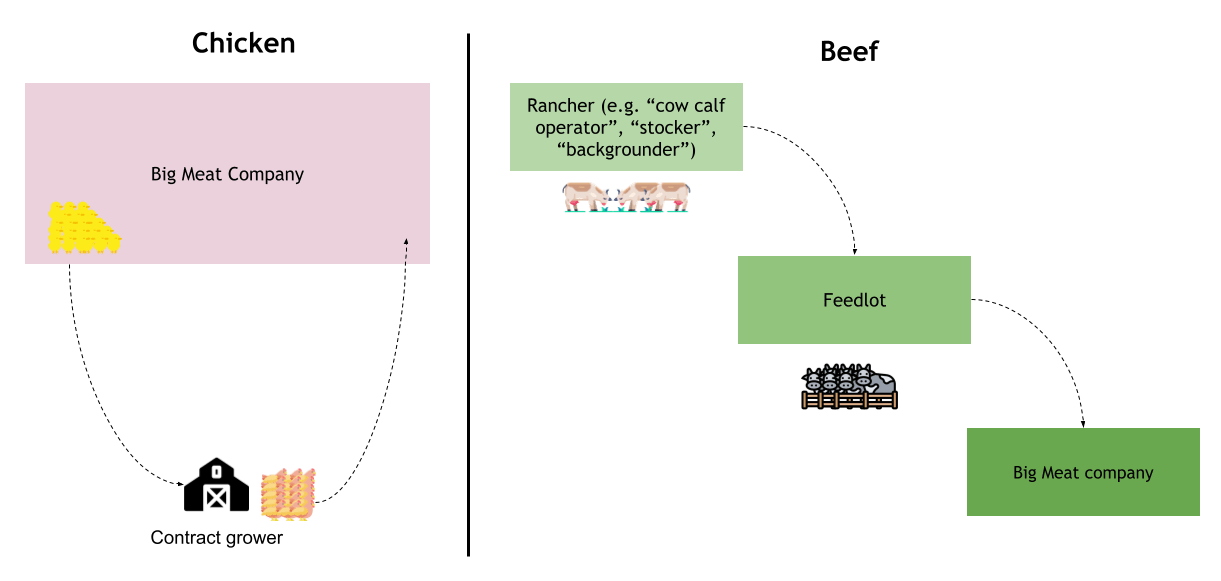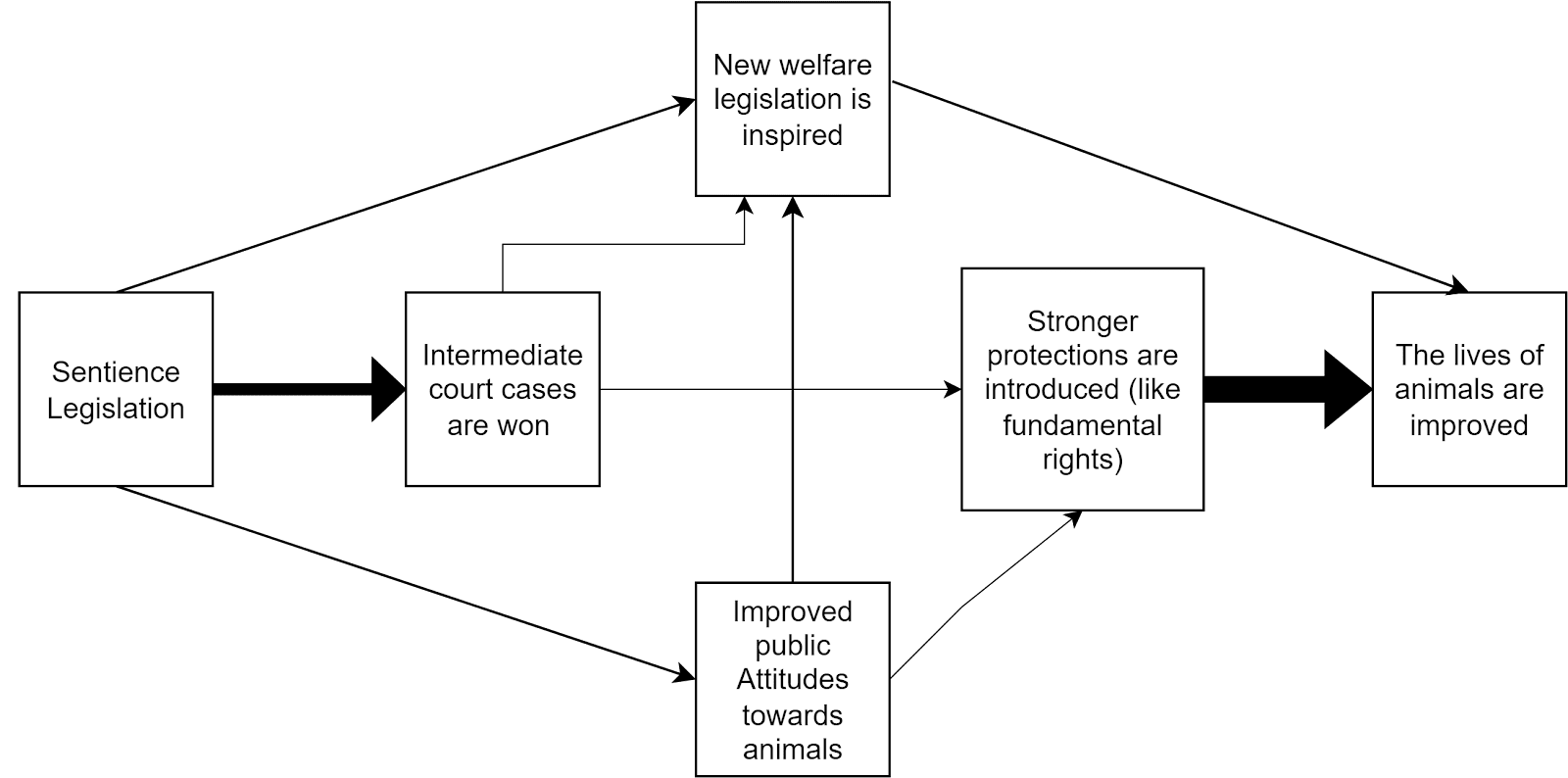Welcome to this edition of the Animal Advocacy Bi-Weekly Digest, where we aim to help people in the animal welfare community quickly keep up with the most important information in the space. As a reminder, you can get this digest as an email by signing up here. This digest actually summarises the last three weeks rather than two weeks, as I was busy being ill and moving house last week!
I’m summarising the following posts:
- Working with the Beef Industry for Chicken Welfare - Robert Y
- Do Brains Contain Many Conscious Subsystems? If So, Should We Act Differently? - Bob Fischer, Adam Shriver & Michael St Jules (Rethink Priorities)
- Octopuses (Probably) Don't Have Nine Minds - Joe Gottlieb (Rethink Priorities)
- Does Sentience Legislation help animals? - Max Carpendale (Animal Ask)
- Neuron Count-Based Measures May Currently Underweight Suffering in Farmed Fish - MHR
Quick links:
- Updates to Faunalytics’ Animal Product Impact Scales (Faunalytics)
- Announcing WildAnimalSuffering.org, a new resource launched for the cause (Vegan Hacktivists)
- If We Don’t End Factory Farming Soon, It Might Be Here Forever (Brian Kateman)
- Unfinished draft on the case for a first principles, systematic scoping of meat alternatives - Linch
Working with the Beef Industry for Chicken Welfare - Robert Y
Robert proposes an interesting new approach for animal advocates - working with the US beef industry to help farmed chickens. He thinks this approach could be valuable for a number of reasons, namely:
- Chickens don’t have the same welfare protections as cows, which creates advantages for chicken producers over beef producers (and beef producers want to remove this unfair advantage)
- Chicken is a lot cheaper than beef, so beef farmers have an incentive to raise the price of chickens (thereby creating less demand for chicken, whom we kill in much higher numbers than cows)
- The beef industry is composed of certain actors, namely ranchers and feedlot operators, who are only invested in beef products, and no other meat products. As a result, they have very little to lose from welfare improvements or price increases for chicken.
Robert also believes that a coalition with the beef industry might pave the way towards federal legislation to improve the welfare of chickens, especially important if state level sales-bans, such as Prop 12, are struck down by the Supreme Court. A coalition with the beef industry might be particularly powerful due to their large size (4x the market size of the poultry industry), widespread geographic distribution across the US, and significant political influence. Robert intends to work on this topic further over the next few months and encourages people to reach out if they want to collaborate!
Do Brains Contain Many Conscious Subsystems? If So, Should We Act Differently? - Bob Fischer, Adam Shriver & Michael St Jules (Rethink Priorities)
The fifth post in the Moral Weights Project by Rethink Priorities. This piece examines the Conscious Subsystems hypothesis, the theory that brains have multiple subsystems that can experience sensations that are otherwise inaccessible to the ‘main’ subject. For example, I, James, have one ‘main’ system that can experience sensations such as pain and pleasure (e.g. my consciousness), but this theory suggests there might be other subsystems that also experience pain and pleasure, but don’t interact with the James that is writing this summary. This might be important for understanding which animals to prioritise, as it’s possible that the number of subsystems scales with neuron count, meaning that humans could have 400x more suffering subsystems relative to chickens (as we have 400x the neuron count).
The authors conclude that they don’t believe the Conscious Subsystems hypothesis is likely to change ‘neartermist’ allocation of spending between animal and human wellbeing, as animals are also likely to possess conscious subsystems. If it did, it would likely cause more resources to go towards improving welfare for small invertebrates, such as mites, as views around consciousness that support Conscious Subsystems generally offer a lower bar for which organisms are conscious. However, overall, the authors note that they think the Conscious Subsystems hypothesis is very unlikely, and don’t support acting as if it were true.
(As a disclaimer, this post and the one below is fairly technical, largely discussing philosophy of mind or consciousness).
Octopuses (Probably) Don't Have Nine Minds - written by Joe Gottlieb (and posted by Bob Fischer)
The sixth post in the Moral Weights Project by Rethink Priorities - they’re on a role! This post summaries a report which looks at whether some animals have more than one conscious subject, who are all able to experience pleasure, pain and other sensations. The report focuses on this being true for octopuses, the being who have the most evidence for there being multiple conscious subjects per organism.
The author’s summary finding is that he believes there is a 2.5% likelihood that the default condition for an octopus is to house 9 welfare subjects, that is, subjects that can experience positive and negative emotional states. If this hypothesis were true, averting the suffering of an octopus would produce 9x as much impact in expectation, given 9x more welfare subjects whose lives are improved. This low likelihood is based on limited evidence for the question of whether octopuses house 9 conscious subjects (in this case, the arms of the octopus!), and even lower probability that these conscious subjects have the ability to experience emotions such as sadness.
Does Sentience Legislation help animals? - Max Carpendale (Animal Ask)
Animal Ask evaluates the impact of campaigning for legislation that recognises the sentience of animals, as a potential strategy for animal campaigning organisations. They find that animal sentience legislation is rarely introduced alongside meaningful change for animals, and often as a symbolic gesture. They also note there are some concerns that this could lead to complacency and humanewashing, however, it’s still unlikely the ask would be overall harmful towards animal welfare progress.
Animal Ask also describes more successful cases of sentience legislation, such as in the UK where a committee was also established that will ensure government decisions give appropriate consideration to the new animal sentience legislation. In addition, this new sentience legislation included decapods and cephalopods, potentially a fairly important stepping stone to improving the lives of these animals. Overall, Animal Ask believes this is a moderately strong campaign for animal organisations, but believes their other recommendations are higher impact options, such as banning low welfare imports or establishing a code of practice for farmed fish.
Neuron Count-Based Measures May Currently Underweight Suffering in Farmed Fish - MHR
Following on previous posts on why neuron-counts aren’t a particularly useful proxy for moral importance of various animals, this post addresses how current neuron counts might underweight the experiences of farmed fish. The key point is that current estimates for neuron counts of farmed fish are from very small fish, under 1g in weight. Despite this, these neuron count estimates are applied to farmed fish, which are often 1000x more massive, without any correction for the differences in body weight.
As a result, the author believes that calculations, such as those by FoodImpacts.org, dramatically underestimate the suffering of farmed fish in their welfare calculations. This is likely true despite the fact that neuron counts don’t scale linearly with weight (e.g. a dog only has 50x the neuron count of a mouse, despite being about 1000x more heavy). MHR recommends that a grant to an animal welfare lab could provide much better estimates of neuron counts for farmed fish, given existing science already has these capabilities, and this would be a useful addition to our understanding of fish welfare.



